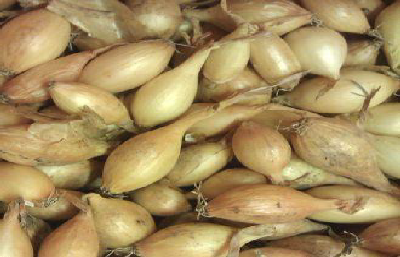







&



Onions and Shallot Sets
After unpacking new purchases, prior to planting, put them into a cool, light, well-
Winter hardy varieties can be planted in early autumn, otherwise plant between February and April, as soon as the soil is sufficiently dry and warm; in practice this is usually late winter or early spring for sandy soils, and mid-
Prepare the soil by digging over and incorporating some fertilizer, work the soil down to a fine tilth as if preparing a seed bed.
Onion and shallot sets are planted into a shallow drill (groove) in the soil about the same depth as the set, or a bit less for some of the longer sets (many shallots, for example). Alternatively plant them individually with a small trowel. It’s not advisable to just push them into the ground as this may cause damage.
Remove any loose papery skins before planting the sets. Spacing can be anything from around 10cm (4in) apart for onions and around 25cm (10in) for shallots, depending on the size of bulbs. Closer spacing results in large numbers of small bulbs, whereas wider spacing results in a smaller number of large bulbs.
When they are planted, the tips at least should still be protruding from the soil surface.
The ‘Dave’ approach is to start sets off in modules and then plant out when conditions are right. This bypasses bad weather problems, allows sifting out of the occasional dud and avoids the annoyance of finding your sets pulled out of the ground by mischievous birds.
In the spring there is rarely the need to water newly planted sets. But in dry spells later on in the summer and autumn, new plantings of overwintering onion sets should be watered in after planting.
Keep weeds checked as dense weed growth will seriously affect yield. Water if the weather is dry (not otherwise) and feed occasionally. Feed an autumn-
Onions form a bulb when the temperature and the number of daylight hours hit the right combination for them which triggers their clock. Until that happens, onions use the daylight to produce a good deal of top growth before they form bulbs (and the more top growth, the bigger the bulb). When the daylight reaches the right number of hours for that variety of onion, the onion will stop forming top growth, and form a bulb instead. The size of the bulb that eventually forms depends on the size of the "stalks", and the number of them. There will be 1 ring in the onion for every stalk that formed, and the larger the stalk, the larger each ring will be. Bulb formation will pause though during dry, very hot or very cold weather.
Remove any flower stems which appear. Mulching is useful for cutting down watering and for suppressing weeds. Stop watering once the onions have swollen and pull back the covering earth or mulch to expose the bulb surface to the sun.
When the bulb is mature the foliage turns yellow and topples over. Leave them for two weeks and then carefully lift with a fork on a dry day.
Onions which are not for immediate use must be dried. Spread out the bulbs on sacking or in trays; outdoors if the weather is warm and sunny or indoors if the weather is wet. Drying will take 7 to 21 days, depending on the size of the bulbs and air temperature. Inspect the bulbs carefully: all soft, spotted and thick-
Store in trays, net bags etc; anything where the air can circulate. Choose a cool and well-
If you have any comments on these notes or alternative advice then please let us know.
The Shop stocks a few varieties of sets -
Spring planting sets arrive early in the year (usually January) while the autumn ones arrive around September time.
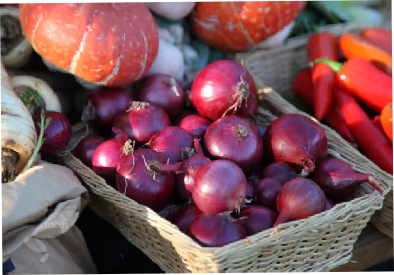
Position: full sun Soil: any soil
Rate of growth: average Hardiness: fully hardy
A mid-
SPRING SETS
RED BARON ONION
STUTTGART
RED SUN SHALLOT
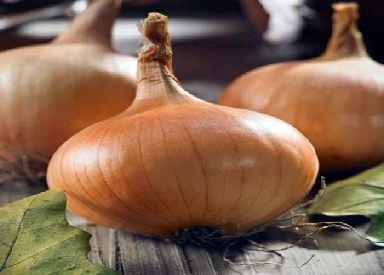
Position: full sun Soil: any soil
Rate of growth: average Hardiness: fully hardy
Stuttgart is an old favourite with characteristically firm, semi-
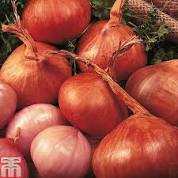
Position: full sun
Soil: fertile, moist but well-
Rate of growth: average Hardiness: fully hardy
Often regarded as the best red-

SHAKESPEARE (now known as)
AUTUMN CHAMPION
JERMOR
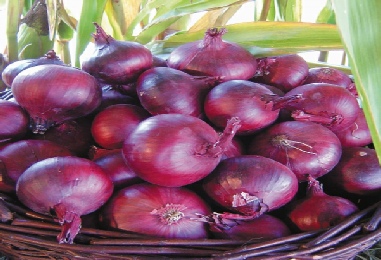
NORTH HOLLAND BLOOD
OVER-
Sarah Raven says that it’s the best spring onion you can grow, with rich-
Shakespeare is an over wintering onion type. This hardy variety has been bred in Britain, to withstand the British climate and has been used commercially for many years
A long French speciality variety -
